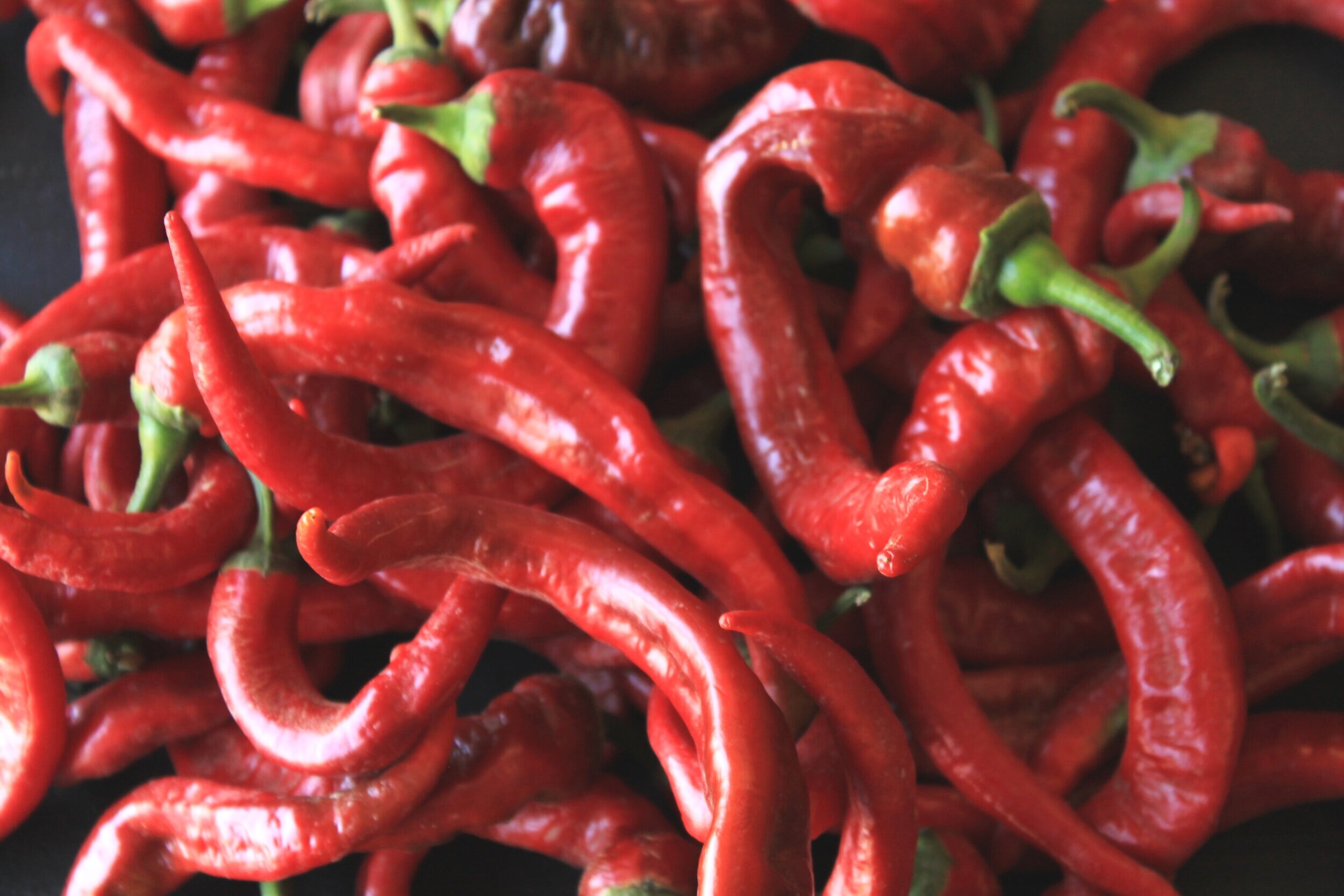Summer 2021 Pepper Lineup
It’s go-time, folks. We’re bringing the heat (and sweet!)
A brief history of Peppers
Peppers have been around a good long while, folks. Like, a loooonnng while.
Indigenous to western South America, the chile pepper gradually made its way to Mexico, where evidence of its cultivation dates from at least 3500 BCE. Peppers have been cranking our capsaicin ever since! Columbus got a hold of the chiles in Mexico, and took them back to Europe with him. From there, throughout the 1500s, they were introduced to India and Southeast Asia, areas that had formally been deprived of pepper plants.
Today, peppers are nearly everywhere! Well, anywhere that is warm enough. They love the heat, which is why we’re most likely to find them in the highs of summer (and exploding from your CSA boxes over the past several weeks). Our main season lasts from end of July through September. China leads the world by a mile in pepper production, followed by Mexico, Turkey, Indonesia and the US. In the US, California, Florida and New Mexico are pepper cultivation leaders.
What’s wild, is that botanically, peppers are technically considered a fruit (hello rich seed cavity), and are members of the nightshade family, so they’re close kin to tomatoes and potatoes!
What’s so great about peppers, anyway?
Peppers, whether sweet or spicy, are varietals of only five different species. So, they all have fairly similar nutritional components. They are super high in Vitamins A & C, and are ripe with other nutrients, like folate, B6, and fiber. They also have high levels of lycopene, which are helpful in diminishing the risk of certain cancers.
Regardless of their spice level, peppers all contain capsaicin. It’s a chemical compound that is great at revving up our metabolisms. No surprise there — you can find us munching on Jimmy Nardellos straight from the field on the regular. Farm snacks for the win!
Spade & Plow Pepper Varieties
We’ve grown more varieties of peppers this year than ever! And boy, are they producing. They’ve taken well to the rich soil and strong sun at our new property in Gilroy.
Though we’ve grown more peppers this year than others, there are a few varieties that we’ve put in our back pockets (metaphorically, of course) for next year. We heed your calls for Serranos and Poblanos, and we’re considering Padrons, too. Take a look below at what’s in the skillet for this summer!
Interested in certain pepper varieties? Give us a shout! Let us know what’s hot.
howdy@spadeandplow.com
Shishitos
Shishitos are a fan favorite, for sure.
These small and slender peppers are tender, sweet, and occasionally pack a bit of a punch (one in every ten shishito peppers are said to be spicy)! They are incredibly easy to cook with as their thin skin blisters and chars. Cook them down in a pan or toss them on your grill and enjoy! For more recipe inspo, check out one from our blog here.
Jimmy Nardellos
Jimmy Nardellos are one of the most productive pepper plants in the world!
These long and curling peppers have a mild, sweet flavor when harvested and a smoky, savory flavor when dried. They are rich in vitamin C, vitamin A, and potassium, and help to boost your body’s immune system. They are great all-around. Add them to salads, dips, sauces, and sandwiches.
Sweet Italians
An alternative to bell peppers, Sweet Italians boast a hint of bitterness that make them extremely versatile.
The mild flavors of these beautiful and vibrant peppers translate seamlessly into a variety of dishes. Sweet Italians are also delicious when eaten raw!
Anaheims
THE California Chile.
Similar to Poblano peppers, which they resemble, Anaheims are mild and are typically used in Mexican and Southwestern cooking. If they are not already, they are sure to become a staple in your cooking. They are also the perfect size to stuff! Use them to make chile relleno, or try out stuffed anaheim recipe.
Jalapeños
What’s not to love about jalapeños?
These peppers bring just the right amount of heat for those who enjoy giving their taste buds a little kick. One of the great culinary peppers in the world, jalapeños can be found in a multitude of dishes. Use them for salsa, stuff them with cheese, or pickle them to make them last! Check out this pickling recipe.
Cayennes
Hot! Hot! Hot!
Cayennes definitely bring the flavor, and fall somewhere between the Serrano and Thai pepper in terms of heat. Put another way, they are about 12 times hotter than a jalapeño. Powdered cayenne (a.k.a. red pepper flakes) is a go-to on the spice rack for professional chefs and those who are new to cooking. Interestingly, the compound capsaicin, which is what gives these peppers their heat, also has several health benefits.
Habaneros
The ultimate show-stopper. These rank as some of the highest on the heat scale, but are rife with flavor!
Aside from their pungency, the habaneros are known for their floral notes, sweetness, and downright stellar crunch.
For many, one single pepper will do, to help flavor and add depth to a dish. They’re a surefire fire starter, though! Use sparingly… or not. Don’t say we didn’t warn you.









